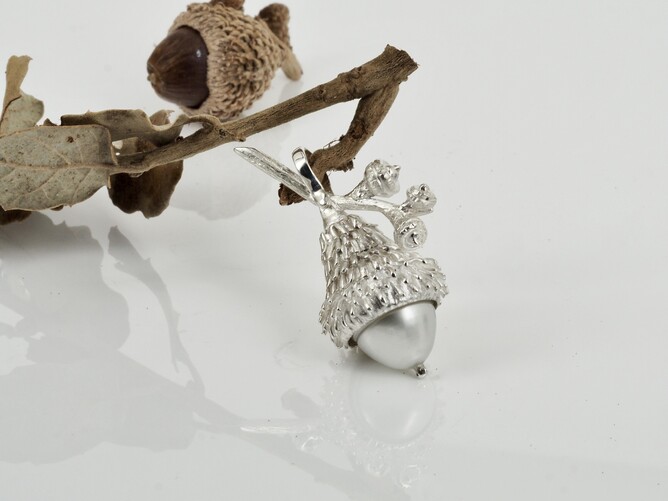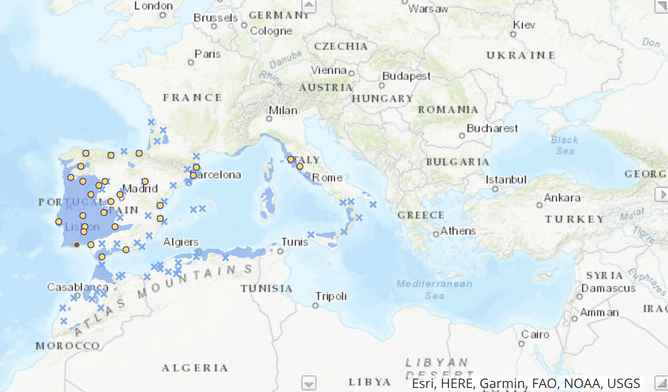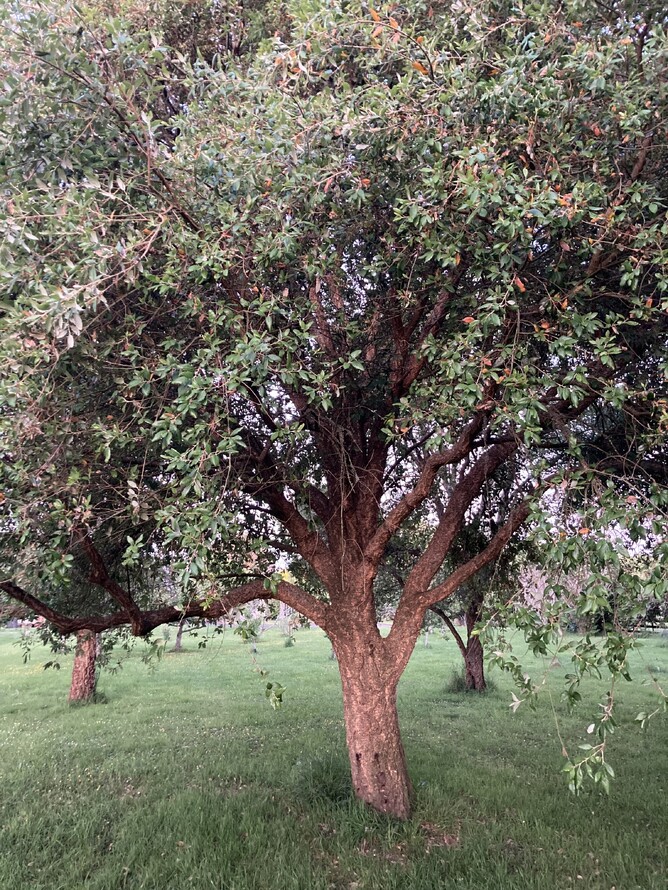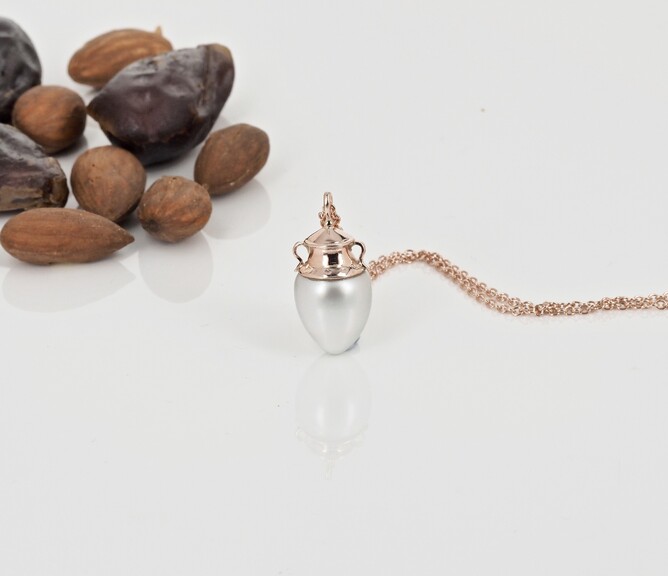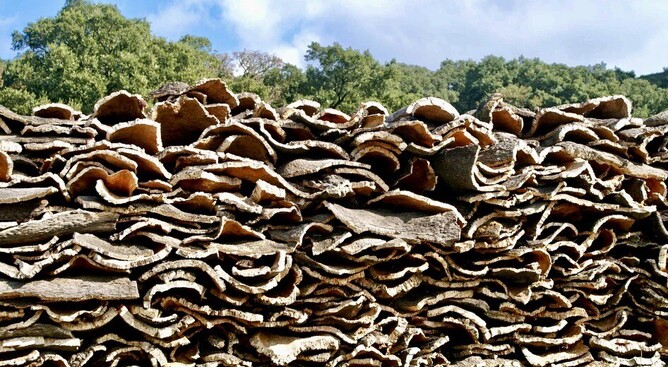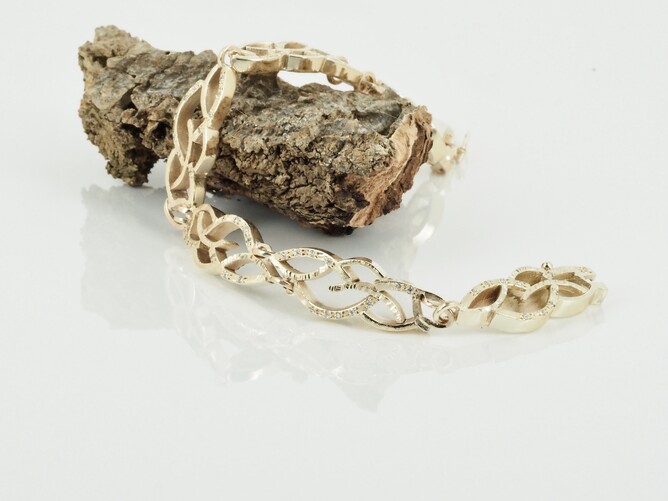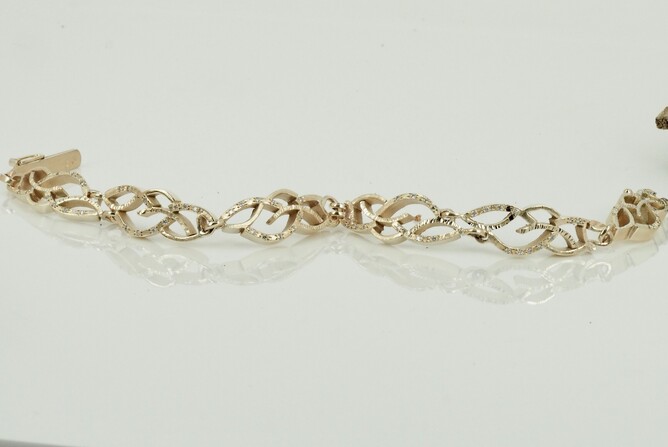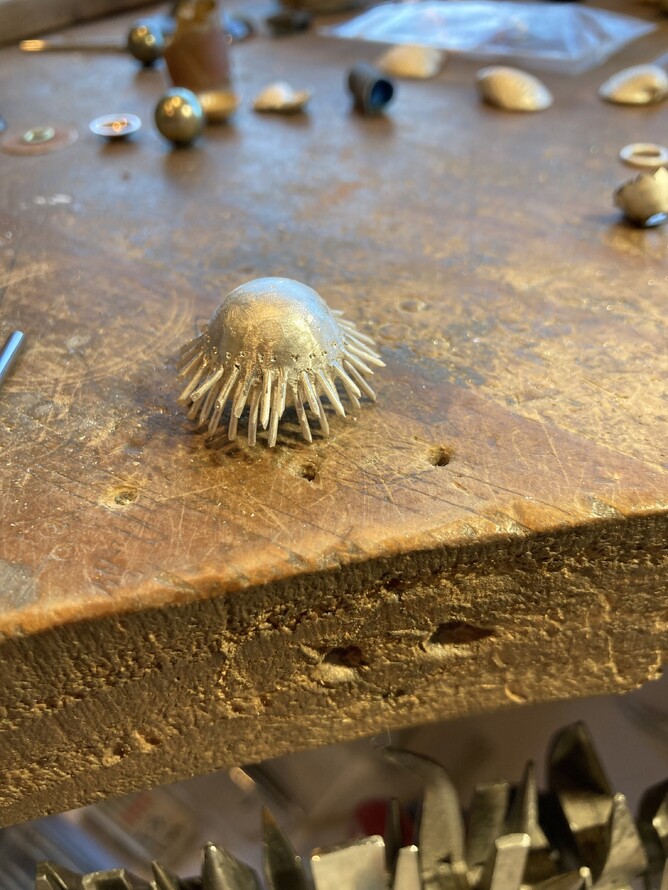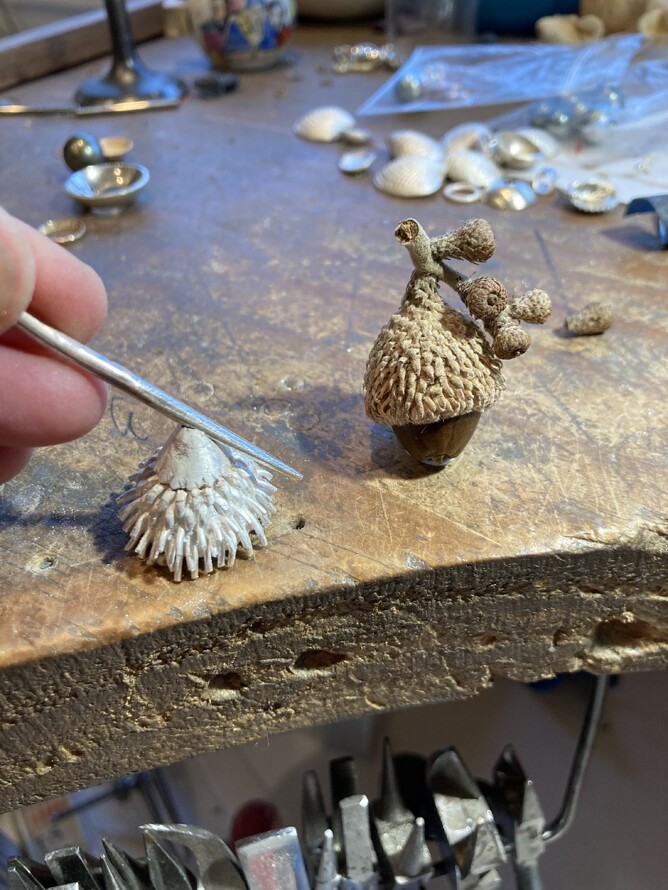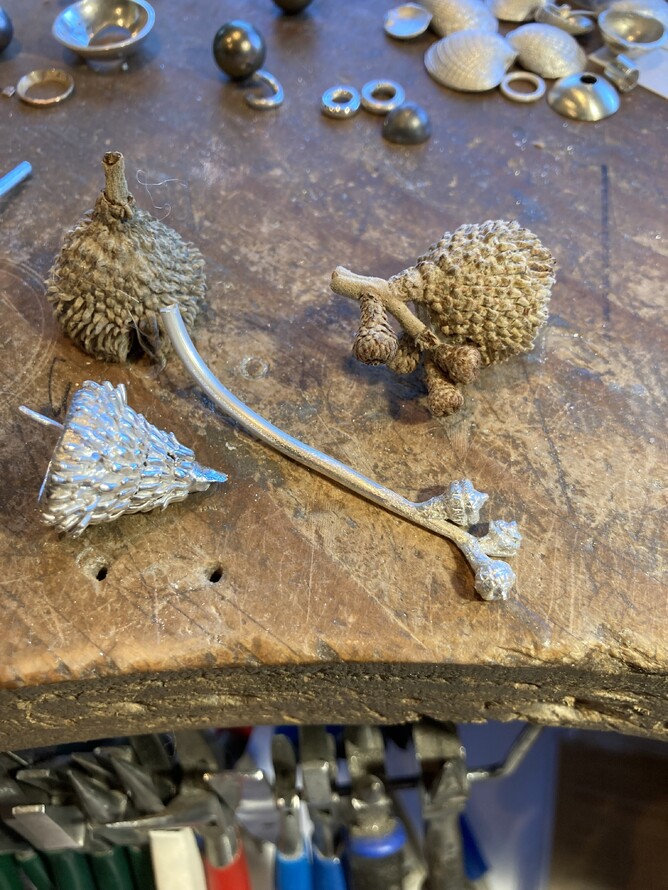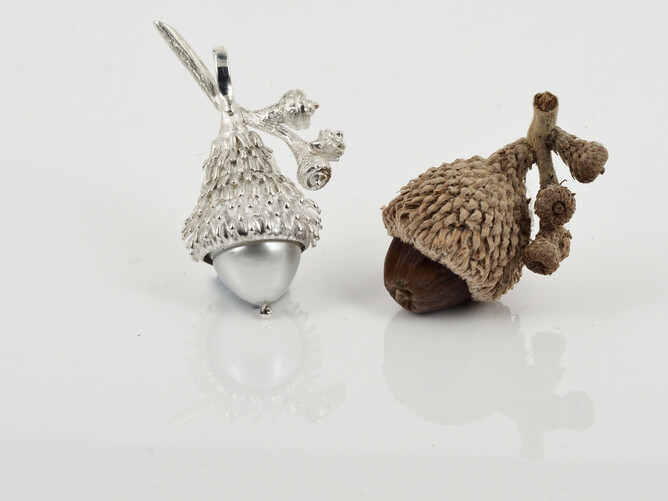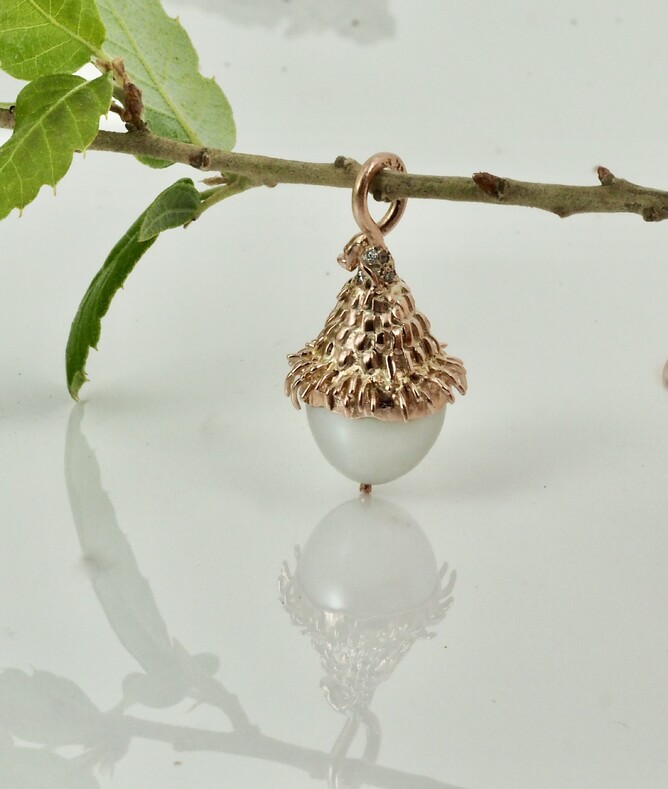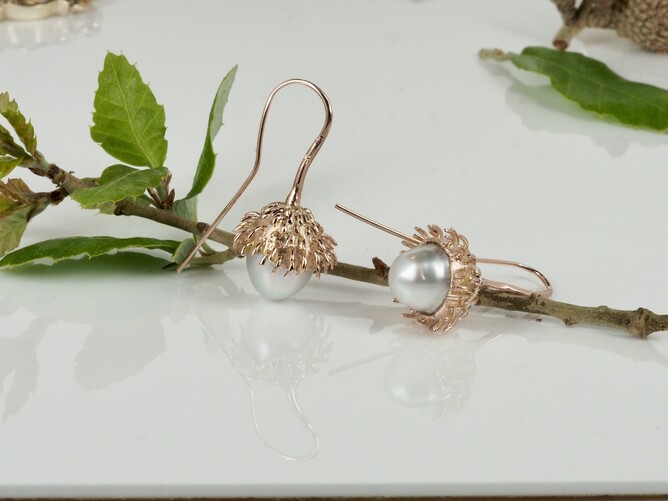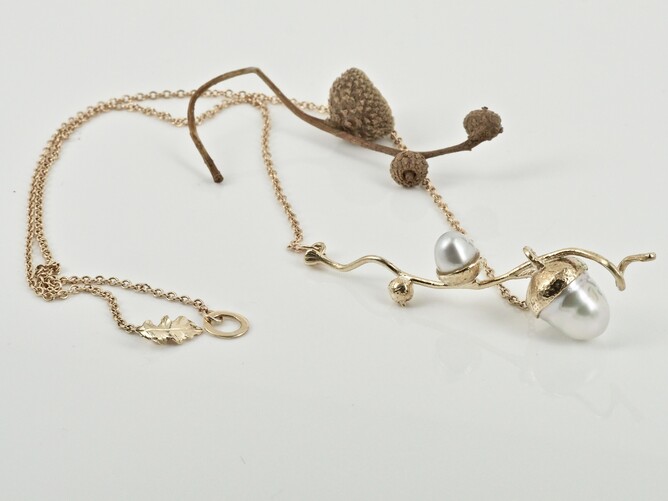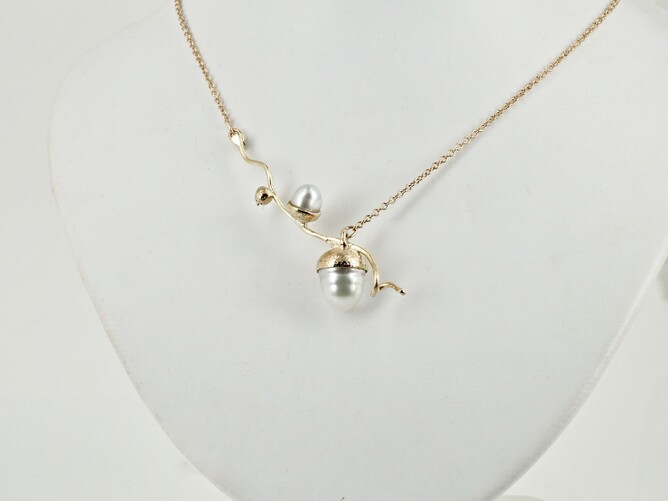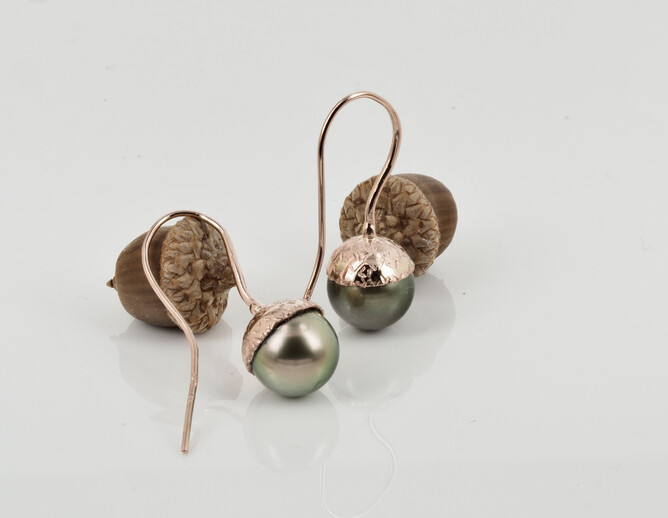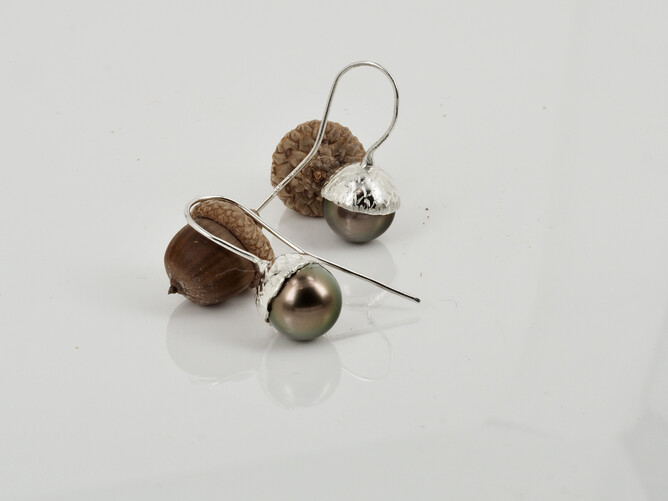Cork oak acorns are adorable and I don’t believe I had ever seen one until earlier this year.
I was cycling madly around my section, with the intent of wearing out my puppy’s energy when I noticed our cork oak tree had acorns on it.
I was completely taken with them and I had to make one - or maybe two or three….
Featured for you below is a wee tour on the uniqueness of cork oak trees, which I found to be surprisingly interesting, and a few pieces of jewellery to match.
Cork oak trees, Quercus suber, are evergreens, unlike English oaks and pin oak trees, which most of us would be more familiar with.
Cork oaks grow to a maximum height of 15 metres, live for approximately 200 years and are predominantly found in Northern Africa and Western Europe: Greece, Spain and Portugal.
A cork oak tree in the Waikato seems a far cry from the warmer climates of the afore mentioned countries, but they can grow happily in other countries as they are able to withstand a reasonable variant of wet and dry weather.
Cork Oaks - special trees
I was unaware just how special these trees are until I started reading about them.
Their importance is two fold:
1. Cork Oak forests
2. Cork Oak bark.
Cork oak forests are unique. They fall under the umbrella of one of the world’s most important ecosystems for preserving biodiversity.
It is estimated that our planet has 2.2 million hectares of cork oak forests and approximately 1/3 of that total is in Portugal.
From the seven Mediterranean cork producing countries, over 100,00 people are directly and indirectly reliant on the economy provided by cork oak forests.
Cork Oak Bark
This stuff is simply amazing!!
It is light, flexible, impermeable, decay resistant, an insulator, and an added bonus it is recyclable and renewable.
It is used in furniture, building construction, air control, flooring, shoes, clothes, bottle stoppers, acoustic and vibration insulation and interestingly as a thermal insulator.
In fact its thermal insulating factors are so good, it has been used in aerospace programs since the 1960’s.
A compound of cork bark between 1.6 and 2.5cm thick is applied to critical areas in a spacecraft, such as the cone, where temperatures can reach 1000 degrees celsius. The insulating cork will protect the vehicle from the spread of flames.
So who knew that?!
Cork bark has been used by civilisations for 1000’s of years. Ancient Egyptians used cork as stoppers in amphora bottles and the Romans and other civilisations used them for the soles of their shoes.
Who has owned a pair of cork wedged shoes?
Naked Trees
The bark of a cork oak tree is first harvested when it reaches 25 years of age, (some texts say 15 years.)
A team of two will harvest a tree, stack it onto a trailer and transport it to a storage place where it will sit for 6 months before it is processed.
Stripping cork bark is a very technical process and it takes many years to complete an apprenticeship. The method that is used for harvesting bark is the same method that has been used for centuries.
You might be interested to learn that the first cork harvest is not good enough for cork stoppers, neither is the second harvest 9 years later, it is not until the third harvest, a further 9 years, that the bark is good enough to be turned into cork stoppers.
Cork from the first two harvests does not go to waste, nor do the offcuts from cork stopper production, it is used in other cork products.
Approximately 340,000 tonnes of cork is produced world wide, each year, and 55% of that total comes from Portugal.
Not surprisingly, the national tree of Portugal is the Cork Oak and it has been so, since the 13th century.
Pictured below is a stack of cork oak bark.
Cork Bark Bracelet
I was quite taken with photos of cork bark stacks, so I side-lined this blog for a few weeks in order to make a cork bark bracelet.
I wanted this bracelet to look like the side profile of a cork bark stack.
I have textured the top of the bracelet using a few different methods, along with a smattering of grain set diamonds.
Cork Oak Acorn Jewellery
Cork oak acorns - it’s these cute little guys that got me hooked on this project, they are like Peruvian woolly hats.
The process of making a cork oak acorn was a lengthy one.
They are made up of several sections of metal added on top of each other to get the overall shape and then all of the small pieces of texture are cut, shaped and soldered on individually. The acorn nut is an Australian South Sea circlé pearl, the perfect gem for an acorn.
Due to the layering of metal, these pendants are reasonably heavy.
Red Gold Cork Oak Acorn Pendant
That line is a bit of a tongue twister!
Sold.
These earrings have a prickly appearance, but they look fantastic on.
English Oak Acorns
As a cork oak acorn may look like a Peruvian woolly hat, I think English oak acorns look like a beanie. For those who are unfamiliar with this kiwi term, it means a snug fitting merino hat.
An English oak acorn necklace pictured below.
Pin Oak Acorn Earrings
And so we have a Peruvian woolly hat, a beanie, and now for a pin oak acorn, a beret!
Pictured below are textured red gold pin oak acorn earrings with green Tahitian pearls.
Acorn Earrings
Sterling silver acorn earrings with green/brown Tahitian pearls.
To conclude
I hope you have enjoyed learning a bit about cork oaks and cork oak bark. It is exciting to read about a natural product that requires man to work with nature to produce it - like that of the South Sea pearls.
References
Most of my information has come from articles on the internet and from
Amorim, a company that produces cork bark products.
